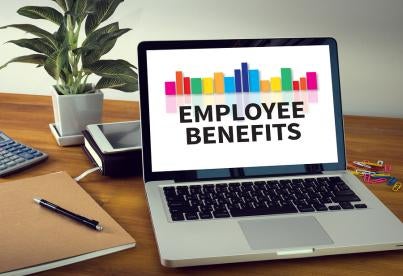A spate of recent legislation and IRS guidance promises to make 2021 an active year for any employer seeking to provide its employees with a competitive array of employee benefits. My “top 5” list of employee benefits that an employer should introduce or enhance in 2021, to improve retention and/or recruitment, is set forth below:
-
Student Loan Repayment by Employer under an Educational Assistance Program.
If there is one request that millennials and younger workers make repeatedly to their employers, it is this: Help us pay down our college/graduate school student loan debt! Under the Coronavirus Aid, Relief, and Economic Securities Act of 2020 (known as the CARES Act), as amended by the Consolidated Appropriations Act of 2021 (the “CAA”), an employer may pay up to $5,250 annually of an employee’s qualified higher education expenses. Such payments are excludible from the employee’s wages for federal income and FICA (Social Security and Medicare) tax purposes. This pre-tax student loan repayment program runs through December 31, 2025.
An employer seeking to provide this benefit must establish a written “educational assistance program.” The Employee Benefits Practice Group at Jackson Lewis can help an employer prepare such a document. Think of it as a “handbook” for educational assistance, just shorter, generally limited to IRS-required provisions!
-
Student Loan Repayment by Employee under a 529 Plan.
Many parents use a 529 plan to save for the college education of their children. Although the contributions are made on an after-tax basis, the earnings are distributed tax-free to the extent the principal and earnings are used to pay for qualifying college expenses, for instance, tuition, room and board, and books.
The Setting Every Community Up for Retirement Enhancement Act of 2019 (the “SECURE Act”) amended Section 529 of the Internal Revenue Code to permit an individual to use up to $10,000 to make qualified student loan repayments on a tax-free basis The $10,0000 limit is an aggregate lifetime limit.
An employer could make this option available to its employees via payroll withholding and even could consider “matching” employee contributions used to repay student loans. And if the matching is done under an educational assistance program (see 1, above), the first $5,250 in employer contributions will be tax-free to the employee!
-
Carryover of Health and Dependent Care Flexible Spending Account (“FSA”) Amounts from 2020 and 2021 to 2021 and 2022, Respectively.
Health and dependent care FSAs typically have a “use it or lose it rule” under which amounts remaining in the account at the end of the plan year (plus any grace period, which must be limited to 2 ½ months after the end of the plan year) are forfeited. The CAA amends the Internal Revenue Code to provide an employer with the option of adding a carryover provision or extending the grace period for expenses to be incurred. Under the carryover provision, an employer may permit participants to carry over unused funds from 2020 to 2021 and from 2021 to 2022. Under the grace period provision, for a calendar year plan, the 2020 grace period may be extended from March 15, 2021, to December 31, 2021, and the 2021 grace period may be extended from March 15, 2022, to December 31, 2022.
The benefit of either approach to employees in the age of COVID is obvious: Employees have more time to use their contributions, a meaningful benefit to employees incurring out-of-pocket COVID-related costs and employees whose children could not attend daycare due to the pandemic.
-
Setting Up a 401(k) Plan and Obtaining a Tax Credit for Doing So.
Employees expect their employers to provide them with a retirement benefit. The “market” retirement benefit is a 401(k) plan.
Before the SECURE Act, a small business could qualify for a federal tax credit in connection with establishing a 401(k) plan. The credit was the lesser of (1) 50% of “qualified startup costs” or (2) $500.
Under the SECURE Act, a small business can receive a tax credit for establishing a new 401(k) plan or adding an automatic enrollment provision to an existing or new 401k) plan. In the case of establishing a new plan, the tax credit equals the greater of (1) $500 or (2) the lesser of (A) $250 multiplied by the number of non-highly compensated employees (for 2021, those earning not more than $130,000 in 2020) or (B) $5,000. In the case of adding an automatic enrollment feature, the tax credit is equal to $500. These credits are available for up to three years, meaning that an employer can qualify for $5,500 for each of the first three years, for a total of $16,500.
-
Penalty-Free Withdrawals from 401(k) Plan to Pay for Birth or Adoption of a Child.
The SECURE Act permits an employer to amend its qualified defined contribution retirement plan, e.g., its 401(k) plan, to permit an employee to withdraw up to $5,000 to pay for expenses incurred in connection with the birth or adoption of a child without triggering the 10% tax on pre-age 59 ½ withdrawals. For the exemption to apply, the withdrawal must occur during the one-year period following the birth or adoption.
IRS guidance clarifies that the $5,000 limit applies to each child born or adopted. For instance, if an employee or the employee’s spouse has twins, the limit is $10,0000.
To make this benefit available to its employees, an employer would need to amend its retirement plan accordingly. The deadline for a calendar year plan is December 31, 2022. Most employers can obtain a copy of a form amendment from their plan providers.




 i
i

